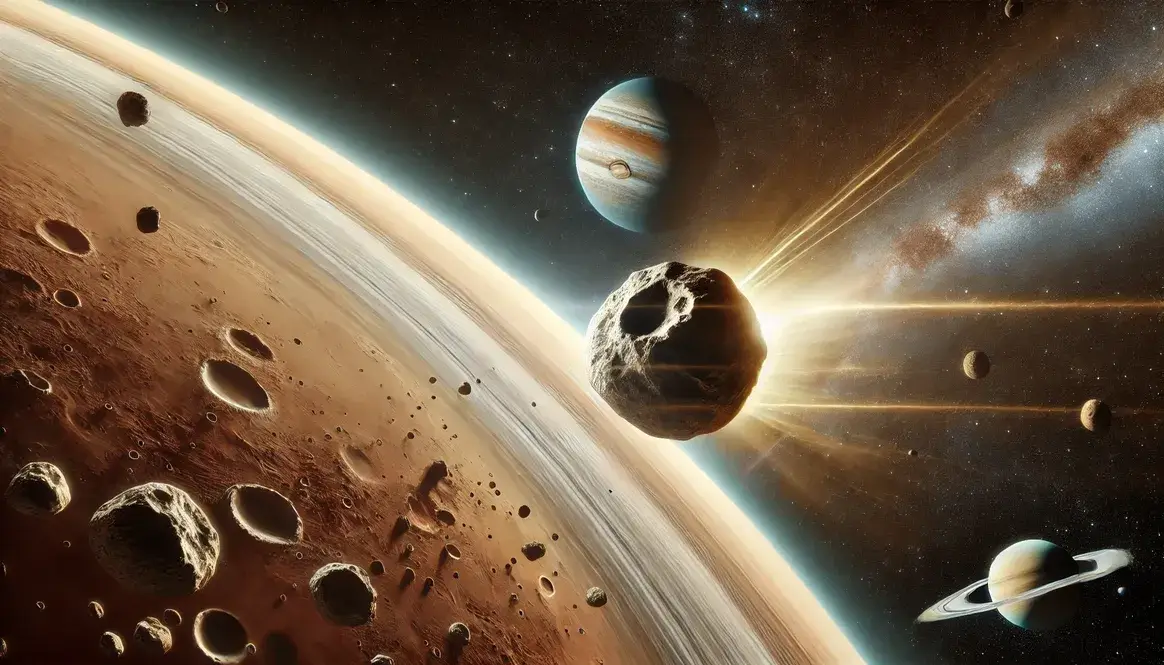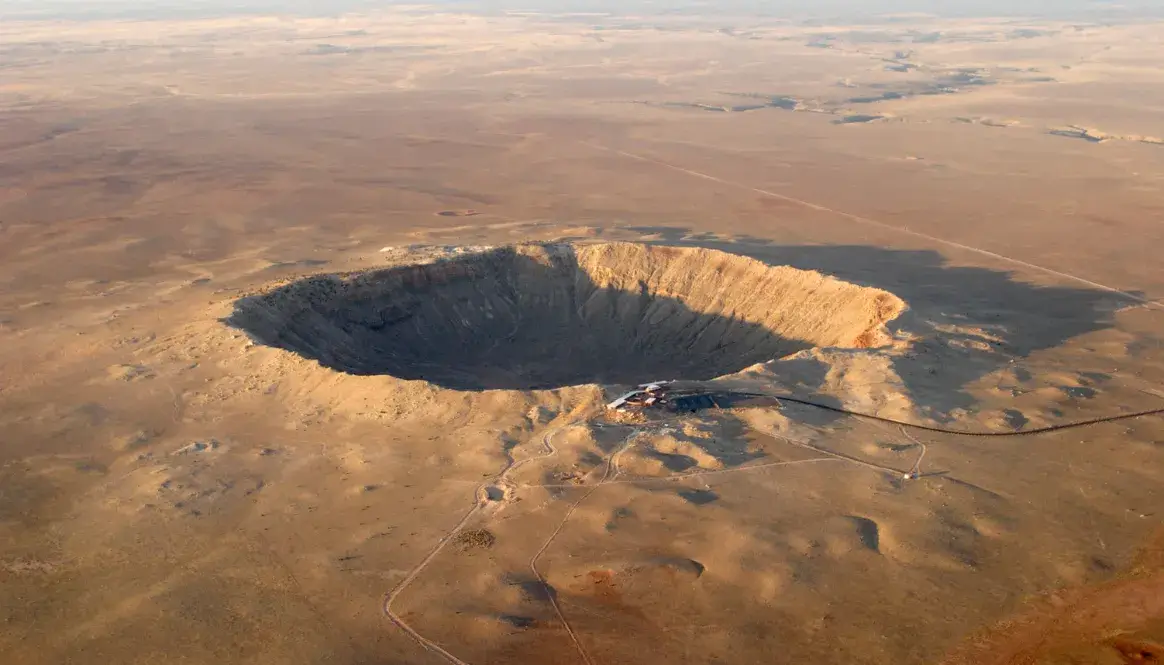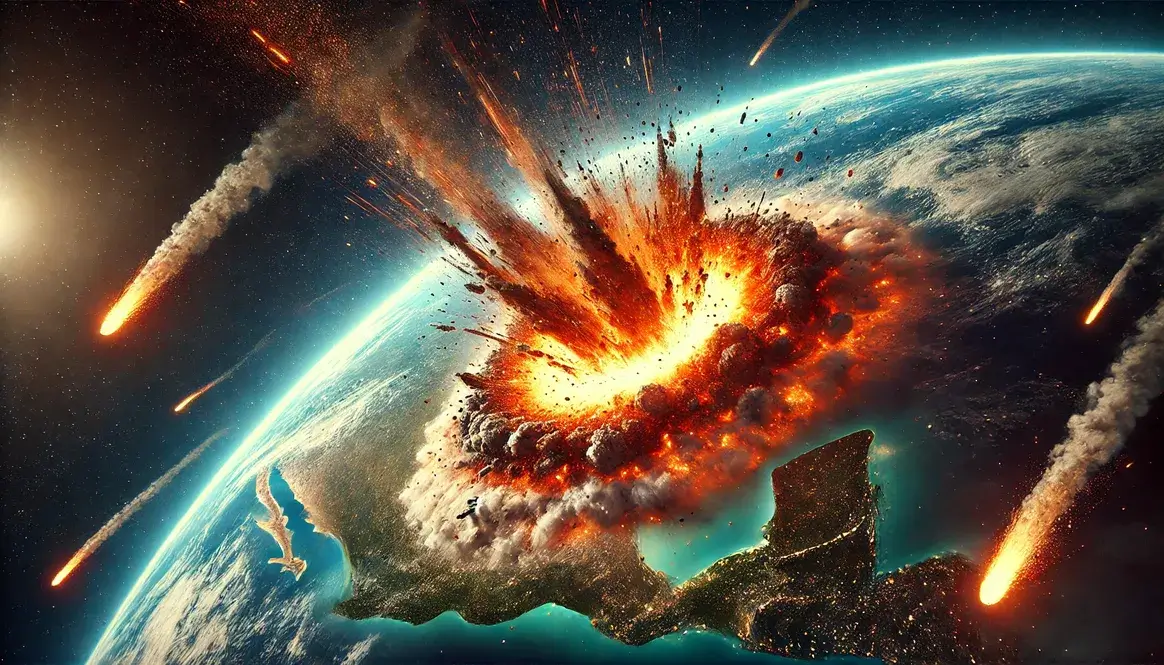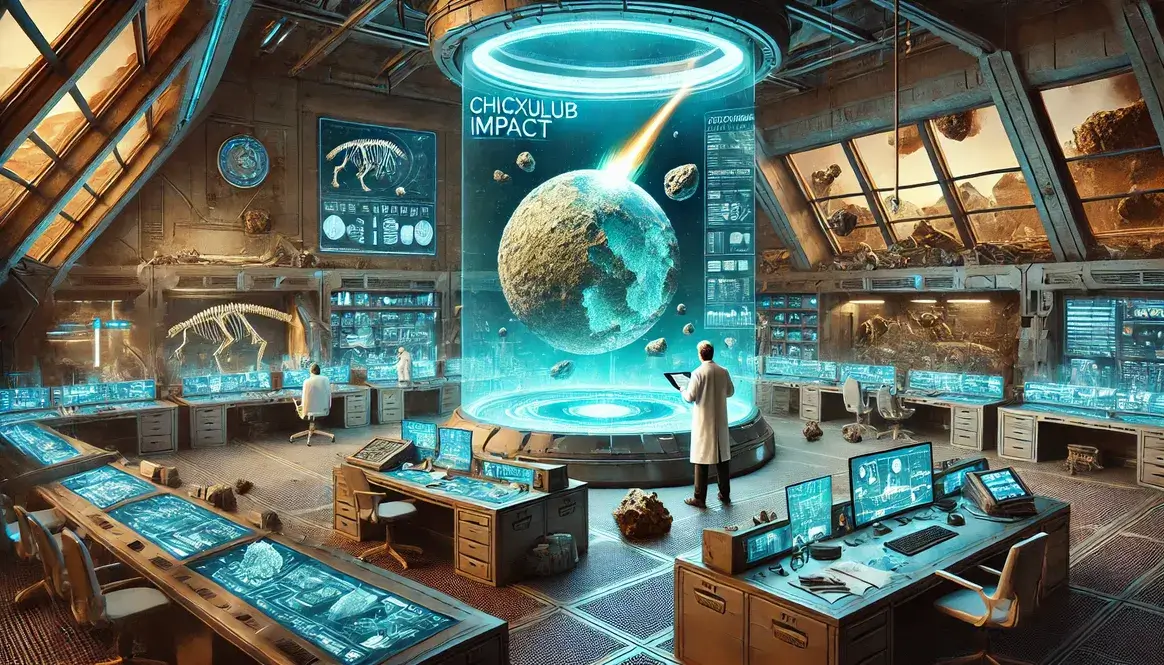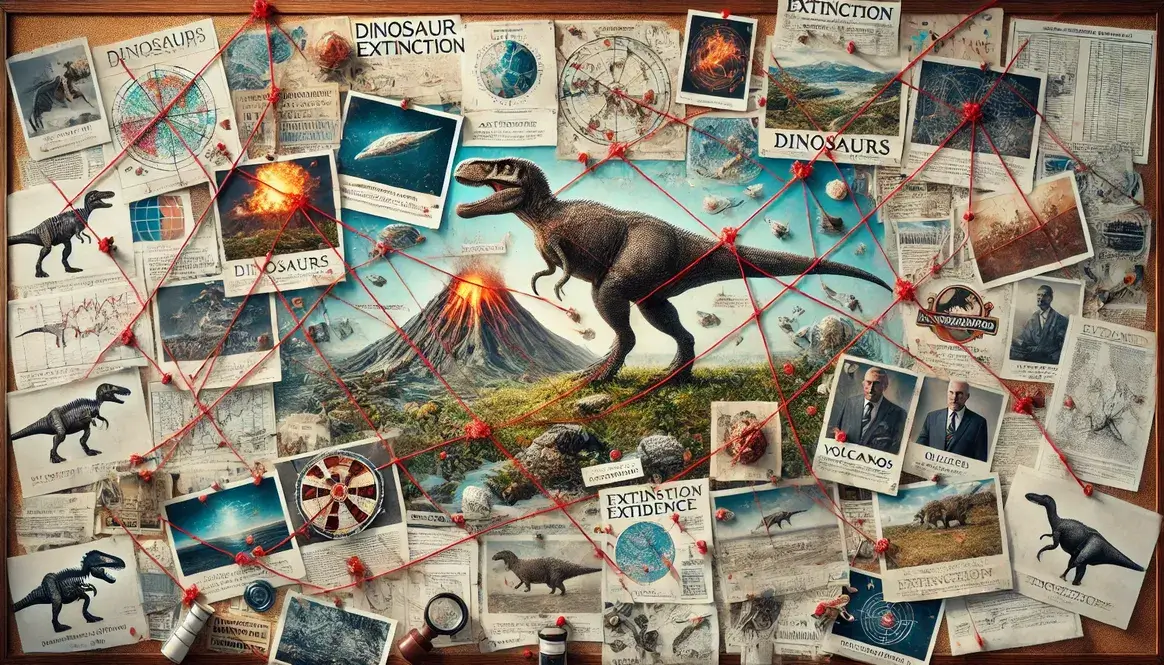The mystery of where the dinosaur-killing asteroid came from has fascinated scientists for decades. This cosmic detective story involves piecing together clues from Earth’s rocks, studying the dynamics of our solar system, and using advanced computer simulations. Recent research has shed light on the origins of this world-changing space rock, giving us a clearer picture of the cosmic events that led to the end of the dinosaur era.
So where did the dinosaur asteroid come from?
The dinosaur asteroid most likely originated from the main asteroid belt between Mars and Jupiter. This region is home to millions of rocky objects leftover from the formation of our solar system. Some of these asteroids can be knocked out of their orbits and sent on a collision course with Earth.
Scientists have been studying the composition of the Chicxulub crater to understand the nature of the impactor. The evidence points to a carbonaceous chondrite asteroid, a type commonly found in the main asteroid belt.
The asteroid belt: A likely source
The main asteroid belt is a cosmic junkyard orbiting the Sun between Mars and Jupiter. It’s packed with rocky leftovers from the early days of our solar system. Here’s why scientists think the dinosaur asteroid came from this region:
- Composition match: The asteroid’s makeup is similar to certain types of asteroids found in the main belt. Specifically, it matches the characteristics of carbonaceous chondrites, which are rich in carbon and contain organic compounds.
- Orbital dynamics: The belt’s location makes it possible for asteroids to be nudged into Earth-crossing orbits. Gravitational interactions with Jupiter and Saturn can alter the paths of asteroids, potentially sending them towards the inner solar system.
- Abundance: With millions of objects, the belt provides plenty of potential impactors. The sheer number of asteroids increases the chances of one being set on a collision course with Earth.
- Size distribution: The main belt contains asteroids of various sizes, including those large enough to cause a global catastrophe like the one that led to the K-Pg extinction.
| Asteroid Belt Facts | Details |
|---|---|
| Location | Between Mars and Jupiter |
| Estimated number of asteroids | Over 1 million |
| Main composition | Rock and metal |
| Largest object | Ceres (dwarf planet) |
| Distance from Sun | 2.2 to 3.2 astronomical units |
| Total mass | About 4% of the Moon’s mass |
The main belt’s diversity of asteroid types also supports this theory. It contains both S-type (silicaceous) and C-type (carbonaceous) asteroids, with the latter matching the composition of the dinosaur-killing impactor.
Other potential sources in our solar system
While the main asteroid belt is the most likely source, scientists have considered other possibilities:
- Kuiper Belt: A region beyond Neptune’s orbit containing icy bodies. It’s less likely due to the impactor’s composition. Kuiper Belt objects are primarily made of ices (water, methane, and ammonia) and wouldn’t match the rocky nature of the dinosaur asteroid.
- Oort Cloud: A hypothetical cloud of icy objects at the edge of our solar system. These objects are too far and usually too small to cause such an impact. Additionally, their icy composition doesn’t align with the evidence found in the Chicxulub crater.
- Long-period comets: These come from the outer solar system but don’t match the impactor’s composition. Comets are mostly made of ice and dust, while the dinosaur asteroid was primarily rocky.
- Near-Earth asteroids: While these pose a current threat to Earth, the population of these objects was likely different 66 million years ago. The dinosaur asteroid probably spent time as a near-Earth asteroid before impact, but its ultimate origin was likely the main belt.
The main asteroid belt remains the prime suspect in this cosmic cold case. But the search continues, as scientists work to pinpoint the exact source of the asteroid that changed Earth’s history. By studying the Chicxulub impact and comparing it to other major asteroid impacts, researchers hope to refine our understanding of where these planet-changing rocks come from.
Tracing the asteroid’s journey
Scientists use a combination of astronomical observations, computer simulations, and geological evidence to piece together the path of the dinosaur-killing asteroid. This cosmic detective work involves understanding the complex dance of gravity and motion in our solar system.
Orbital dynamics and celestial mechanics
The journey of an asteroid from the main belt to Earth is far from straightforward. It’s a cosmic pinball game involving multiple factors:
- Resonances: Certain orbital periods can create gravitational “sweet spots” that push asteroids into new orbits.
- Collisions: Impacts between asteroids can alter their trajectories.
- Yarkovsky effect: Sunlight can gradually change an asteroid’s orbit over time.
These factors can work together to nudge asteroids out of stable orbits and into Earth-crossing paths. The process often takes millions of years, with asteroids slowly drifting into potentially dangerous orbits.
| Asteroid Journey Stages | Description |
|---|---|
| Main belt residence | Asteroid orbits stably in the belt |
| Resonance perturbation | Gravitational effects alter the orbit |
| Near-Earth approach | Asteroid enters Earth’s neighborhood |
| Earth impact | Final collision with our planet |
The role of Jupiter in asteroid trajectories
Jupiter, the solar system’s heavyweight champion, plays a crucial role in shaping asteroid paths. Its massive gravitational pull can both protect and endanger Earth:
- Cosmic shield: Jupiter often deflects or captures asteroids, preventing them from reaching the inner solar system. This gravitational influence has likely saved Earth from many potential impacts.
- Orbital disruptor: However, Jupiter can also fling asteroids out of stable orbits, potentially sending them on a collision course with Earth. This may have been the case with the dinosaur-killing asteroid.
- Resonance creator: Jupiter’s orbit creates zones of gravitational resonance in the asteroid belt. These resonances can gradually push asteroids into unstable orbits over millions of years.
The interplay between Jupiter and the asteroids is complex. While it often protects Earth, it may have also set the stage for the end-Cretaceous extinction by redirecting a large asteroid towards our planet.
Scientists use advanced computer models to simulate these gravitational interactions over millions of years. These simulations help researchers understand how an asteroid might have escaped the main belt and eventually collided with Earth, triggering the events that killed the dinosaurs.
By studying these cosmic dynamics, researchers not only unravel the mystery of the dinosaur-killing asteroid but also improve our understanding of potential future impacts. This knowledge is crucial for developing strategies to protect Earth from similar cosmic catastrophes in the future.
Composition clues: What the asteroid was made of
The composition of the dinosaur-killing asteroid provides crucial insights into its origin. By analyzing the chemical makeup of the impact site and global sediment layers, scientists have pieced together a portrait of the cosmic culprit.
Chondrite characteristics
The asteroid that struck Earth at the end of the Cretaceous period was likely a carbonaceous chondrite. This type of asteroid is among the most primitive in our solar system, containing materials that haven’t changed much since the formation of the planets.
Key features of carbonaceous chondrites include:
- High carbon content: Rich in organic compounds
- Water-bearing minerals: Indicate formation in a water-rich environment
- Chondrules: Small, round grains formed in the early solar system
These characteristics suggest the asteroid originated in the outer regions of the main asteroid belt, where conditions were cool enough for water-bearing minerals to form.
| Asteroid Type | Composition | Typical Location |
|---|---|---|
| Carbonaceous Chondrite | Carbon-rich, water-bearing | Outer asteroid belt |
| Stony (S-type) | Silicate-rich, metallic | Inner asteroid belt |
| Metallic (M-type) | Iron-nickel dominant | Throughout belt |
The chondritic nature of the impactor provides a direct link to the early solar system, offering a glimpse into the conditions present when our planets were forming.
Iridium: The extraterrestrial calling card
One of the most telling clues about the asteroid’s composition is the presence of iridium in the K-Pg boundary layer. This rare element is much more abundant in asteroids than in Earth’s crust, making it a clear marker of extraterrestrial impact.
The iridium anomaly, first discovered by Luis and Walter Alvarez, sparked the impact theory of dinosaur extinction. Here’s why it’s so significant:
- Rarity on Earth: Iridium is extremely rare in Earth’s crust due to its tendency to sink into the core during planetary formation.
- Abundance in space: Asteroids, particularly carbonaceous chondrites, contain much higher concentrations of iridium.
- Global distribution: The iridium-rich layer is found worldwide, indicating a massive, global event.
The presence of this iridium-rich layer not only confirms the impact theory but also helps scientists estimate the size of the asteroid. Based on the amount of iridium deposited globally, researchers estimate the impactor was about 10 to 15 kilometers in diameter.
This cosmic fingerprint, combined with other geological evidence, paints a clear picture of a massive asteroid strike. The impact’s power vaporized both the asteroid and parts of Earth’s crust, dispersing iridium and other materials globally.
By studying these compositional clues, scientists continue to refine our understanding of the asteroid’s nature and origin. This research not only sheds light on the dinosaurs’ extinction but also helps us better understand the threats posed by near-Earth asteroids today.
Ongoing research: Piecing together the cosmic puzzle
Scientists continue to unravel the mystery of the dinosaur-killing asteroid’s origin through various research methods. This ongoing investigation combines cutting-edge technology with traditional scientific analysis to paint a clearer picture of the cosmic event that changed Earth’s history.
Computer simulations and modeling
Researchers harness the power of supercomputers to simulate the complex dynamics of the solar system. These digital recreations help scientists understand how asteroids move and evolve over millions of years.
Key aspects of asteroid simulations include:
- N-body problems: Calculating the gravitational interactions between multiple objects
- Orbital evolution: Tracking how asteroid orbits change over time
- Collision probabilities: Estimating the likelihood of impacts with Earth
By running thousands of simulations with varying initial conditions, researchers can identify the most likely scenarios for the dinosaur asteroid’s journey from the main belt to Earth.
One recent study used computer models to trace the paths of asteroids ejected from different parts of the main belt. The results suggested that asteroids from the inner part of the belt are more likely to strike Earth, narrowing down the potential origin of the dinosaur-killing impactor.
Analyzing other asteroid impacts
Studying other asteroid impacts, both ancient and recent, provides valuable insights into the nature of these cosmic collisions. By comparing the Chicxulub crater with other impact sites, scientists can better understand the unique characteristics of the K-Pg impactor.
Recent research has focused on:
- Crater morphology: Comparing the shape and structure of impact craters
- Ejecta patterns: Analyzing the distribution of material thrown out by impacts
- Geochemical signatures: Identifying chemical traces left by different types of impactors
For example, the study of smaller, more recent impacts like the Chelyabinsk event in 2013 has improved our understanding of how asteroids break up in Earth’s atmosphere. This knowledge helps refine models of larger, more ancient impacts.
The asteroid’s legacy: Shaping Earth’s history
The dinosaur-killing asteroid left an indelible mark on our planet, triggering a cascade of events that reshaped Earth’s ecosystems and paved the way for the rise of mammals, including humans.
The impact’s immediate consequences were devastating:
- Global wildfires scorched vast areas of land, releasing massive amounts of smoke and soot into the atmosphere.
- Mega-tsunamis swept across coastlines, causing widespread destruction.
- Worldwide darkness ensued as debris blocked out the sun, leading to a prolonged period of cooling.
In the aftermath, Earth experienced a dramatic shift in its flora and fauna. The extinction of the dinosaurs opened up new ecological niches, allowing mammals to diversify and eventually dominate the planet.
This cosmic collision serves as a stark reminder of our planet’s vulnerability to extraterrestrial threats. Today, scientists and space agencies worldwide monitor the skies for potentially hazardous asteroids, using the knowledge gained from studying the K-Pg impact to protect our planet from future cosmic catastrophes.
The ongoing research into the origin and nature of the dinosaur-killing asteroid not only helps us understand a pivotal moment in Earth’s history but also informs our strategies for planetary defense. As we continue to unravel this cosmic mystery, we gain valuable insights into the forces that have shaped our world and the potential challenges we may face in the future.

